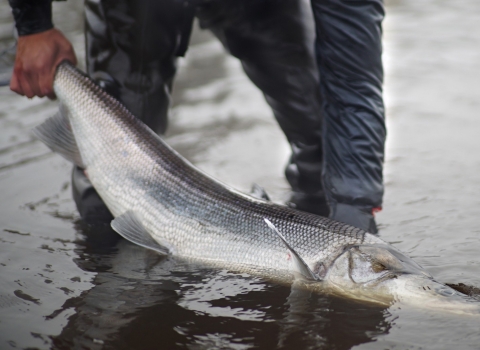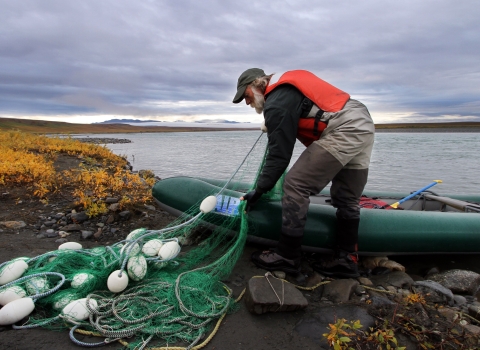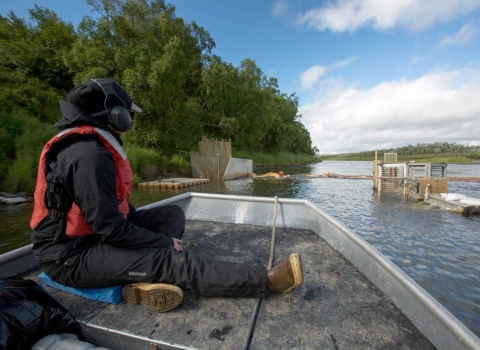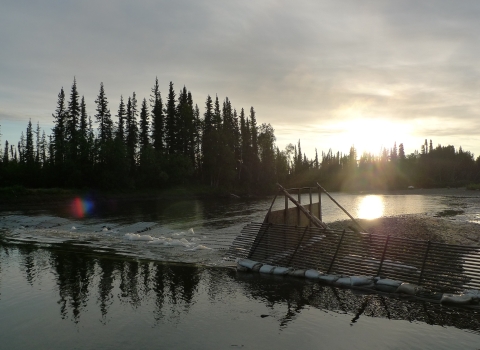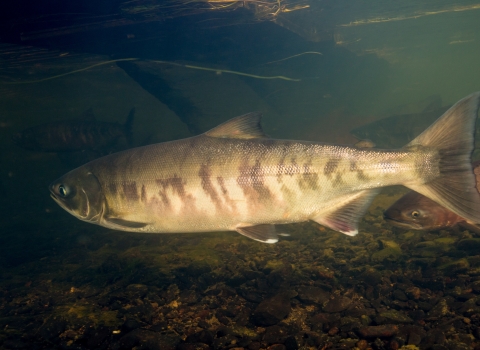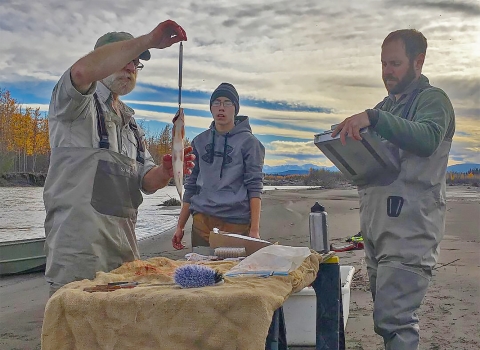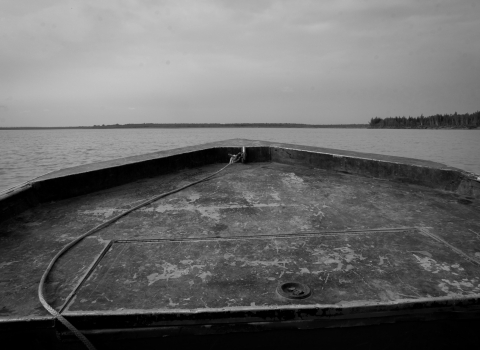Projects and Research
In the spring of 2004, thawing permafrost caused a large landslide (slump) in the upper Selawik River within Alaska's Selawik National Wildlife Refuge. As the slump grew it discharged tons of sediment upstream of the Selawik sheefish population's spawning grounds. This fish is an important Refuge fixture and year-round subsistence food for the Inupiat people living in the Selawik/Kotzebue...
When woolly mammoths still roamed Earth, rain and snow fell on the south side of Alaska’s Brooks Range. Those same ancient waters are just now entering frozen rivers on Alaska’s North Slope via perennial springs. And they hold the key to survival for salmon-sized Dolly Varden and several other species of fish in Arctic National Wildlife Refuge.
Read more about Alaska's North Slope...
The East Fork Andreafsky River weir is located 43 kilometers upstream of the confluence of the Yukon and Andreafsky rivers, near the village of St. Mary’s. We've been operating this weir from mid-June until early August since 1994 (with the exception of 2020 due to COVID-19). This project is an important platform for assessing and reconstructing the lower Yukon River Chinook and summer Chum...
The Gisasa River flows into the lower Koyukuk River (a major tributary to the Yukon River). We've been operating a weir on the Gisasa River seasonally (June and July) since 1994. This project primarily counts Chinook and summer Chum Salmon as they return to spawn in the headwaters of the Gisasa River (with the exception of 2020 due to COVID-19). This project is an important platform for...
This project enumerates Yukon River fall Chum Salmon in the upper portion of the Yukon River drainage. The Teedriinjik River (formerly designated as the Chandalar but recently reverted back to its Gwich'in names) is a major river system in Interior Alaska. Its salmon stocks support vital subsistence and commercial fisheries in the Yukon River drainage, and are an important...
This multi-year project has sought to reconnect habitat and restore fish passage in Fairbanks, Alaska.
Cripple Creek’s natural channel was abandoned in 1935 when streamflow was diverted into an artificial drain constructed to carry wastewater and sediment from hydraulic mining activity in the Ester area. Though mining activity ceased years ago, the drain channel...
Humpback Whitefish are an important subsistence fishery resource for local communities within the upper Tanana River drainage. Community members have expressed concerns to Tetlin National Wildlife Refuge staff on perceived declines in size and abundance of Humpback Whitefish in the area. To address these concerns, we conducted a study to evaluate demographic changes in local spawning...
The Federal Subsistence Board has given Delegated Authority to the Federal Inseason Fishery manager to manage subsistence fishing for salmon in all Federal Public waters of the Yukon Area.
The Federal manager and a team of assessment and management biologists work together with State of Alaska managers, Office of Subsistence Management staff, Regional Advisory Councils, USFWS Refuge...

